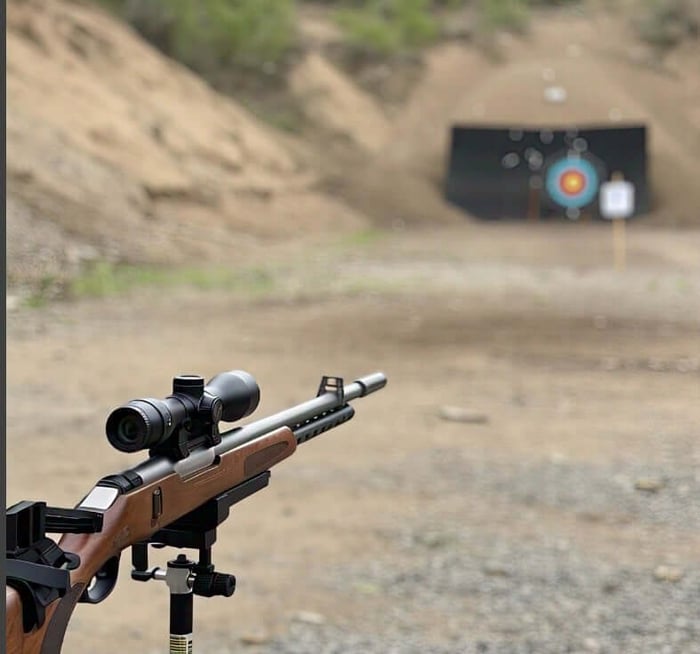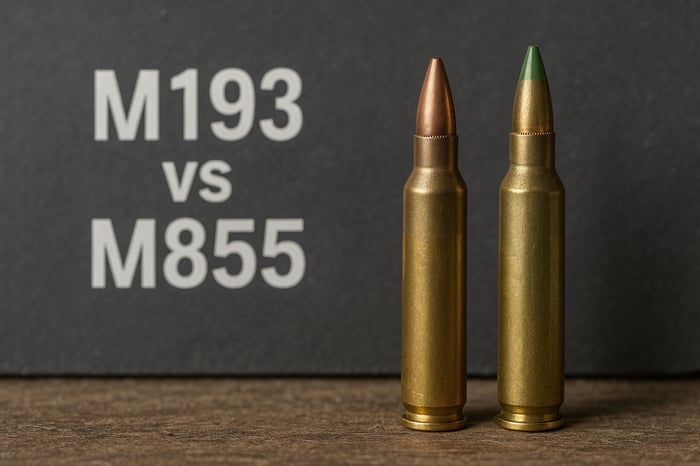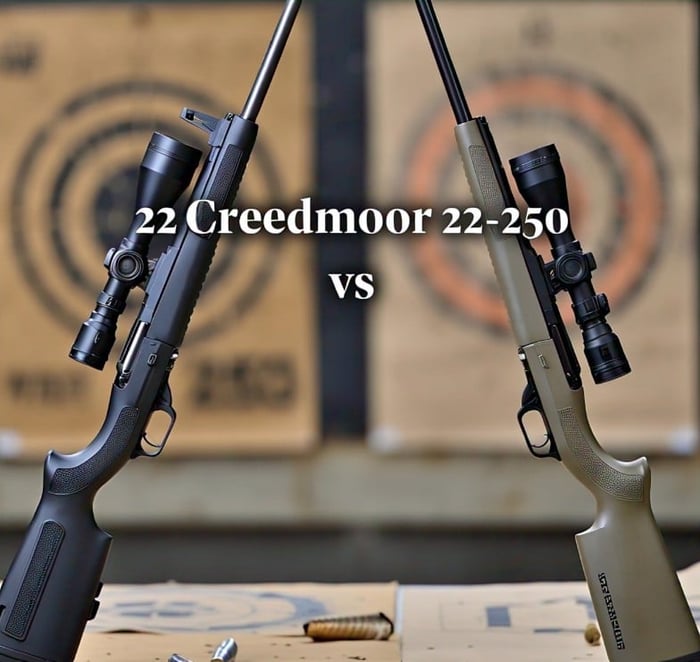In the matter of selecting the best rifle cartridge, the 6.5 Creedmoor vs 223 debate is one that evokes a great deal of interest among hunters, sport shooters, and gun enthusiasts. Both cartridges have their advantages, and the choice of which one to use depends on your requirements, whether hunting, long-range shooting, or tactical use. In this piece, we will go in-depth with the comparison, dissecting their features, performance, and best use cases so that you can make a well-informed choice.
What is the 6.5 Creedmoor vs 223 Debate All About?
The debate revolves around two of the most popular rifle cartridges that perform differently but are frequently compared because of their popularity. The 6.5 Creedmoor, launched in 2007 by Hornady, is a comparatively new cartridge optimized for precision and long-range work. In contrast, the .223 Remington, which dates back to the 1960s, is an all-purpose, lightweight cartridge widely utilized in AR-15 platforms, hunting, and varmint hunting.
Both cartridges possess distinctive traits, and analyzing the matchup means examining their ballistics, recoil, expense, accessibility, and practical uses in the real world. Let's dissect it step by step.
History of 6.5 Creedmoor vs 223
To grasp the controversy, it's useful to understand where these cartridges originated. The .223 Remington was created for use in the military and was used as the basis for the 5.56x45mm NATO cartridge. Its compact nature, high velocity, and light recoil made it a favorite among civilian shooters, particularly in semi-automatic rifles such as the AR-15.
The 6.5 Creedmoor, however, was created with precision in mind. Designed for competitive long-range shooting, it quickly gained popularity among hunters and marksmen for its flat trajectory and excellent ballistic performance. Comparing the origins shows how each was built for different goals, which shapes their performance today.
Ballistics: 6.5 Creedmoor vs 223
One of the largest advantages of the debate is ballistics. Ballistics dictate how a bullet behaves in speed, energy, and accuracy as it travels over distance. Let's take a look at how they compare.
6.5 Creedmoor Ballistics
The 6.5 Creedmoor is well reputed for long-range performance. A standard 140-grain 6.5 Creedmoor round exits the barrel at around 2,700 fps with approximately 2,200 foot-pounds of energy. Due to its high ballistic coefficient (BC), it resists wind drift and holds on better at greater ranges, which is suitable for shots over 500 yards.
In the bout, the 6.5 Creedmoor excels at long-range accuracy. It holds supersonic velocities beyond 1,000 yards, a huge plus for competitive shooters and hunters taking aim at big game such as deer or elk.
.223 Remington Ballistics
The .223 Remington, on the other hand, is a shorter, lighter cartridge. A standard 55-grain .223 bullet goes approximately 3,200 fps with roughly 1,200 foot-pounds of energy at the muzzle. It's excellent for short- to mid-range work because of its high velocity, but it degrades rapidly at longer ranges over 300 yards as a result of its lower BC.
When compared, the .223 is less efficient at long ranges but superior in uses such as varmint hunting or tactical situations where fast follow-up shots and minimal recoil are essential.
Ballistic Comparison: 6.5 Creedmoor vs 223
Here's a brief side-by-side comparison of the ballistics:
Muzzle Velocity: .223 is quicker (3,200 fps vs. 2,700 fps for 6.5 Creedmoor).
Energy: 6.5 Creedmoor puts out more energy (2,200 ft-lbs vs. 1,200 ft-lbs for .223).
Range: 6.5 Creedmoor has an advantage over .223 at longer ranges due to improved BC and energy retention.
Drop: 6.5 Creedmoor drops less at 500 yards and farther.
For marksmen with a focus on long-range precision, the debate decisively goes in favor of the 6.5 Creedmoor. The .223 does its own thing, though, at shorter ranges and in rapid-fire situations.
Recoil: 6.5 Creedmoor vs 223
Recoil is also an important consideration in the issue, particularly for new shooters or those employing lightweight rifles. The .223 Remington has minimal recoil and is very pleasant to shoot for long periods. This minimal recoil is a major reason why it's so well respected in AR-15s and by younger or smaller shooters.
The 6.5 Creedmoor is still controllable but decidedly has more recoil because it is firing a larger bullet with a greater powder load. The 6.5 Creedmoor recoil on a standard bolt-action rifle is roughly twice the recoil of the .223, but still less than heavier calibers such as .308 Winchester.
For those sensitive to recoil, the comparison leans toward the .223. However, experienced shooters may find the 6.5 Creedmoor’s recoil perfectly acceptable for its performance benefits.
Cost and Availability: 6.5 Creedmoor vs 223
When choosing between the two, cost and availability play a big role, especially for shooters who practice frequently. Let’s break it down.
6.5 Creedmoor Ammo Cost
The 6.5 Creedmoor is typically more pricey than the .223. A 20-round box of 6.5 Creedmoor can be $30–$50, depending on the brand and type of bullet. High-quality match-grade ammunition for extended-range shooting can drive prices even higher. Since it's a relatively new cartridge, it's less prevalent in certain regions, though it's becoming increasingly popular.
.223 Remington Ammo Cost
The .223 Remington is one of the least expensive and most common rifle cartridges. Bulk .223 ammo is available at prices as low as $0.30–$0.50 per shot, so it is a great choice for shooting large volumes cheaply. Its military origin (as 5.56 NATO) guarantees consistent availability at most gun shops.
In the cost comparison, the .223 is the best choice for shooters who want to save money or buy ammo in bulk.
Applications: 6.5 Creedmoor vs 223
The shootout frequently hinges on what you intend repair to use the cartridge for. Both are great at different things, so let's discuss their best applications.
Hunting with 6.5 Creedmoor vs 223
For hunting, the comparison depends on the game you’re targeting. The 6.5 Creedmoor is a favorite for medium to large game like deer, elk, or antelope. Its higher energy and better long-range performance make it effective for ethical kills at distances up to 600 yards or more.
The .223, though, is more appropriate for smaller animals such as coyotes, varmints, or predators. It has lower energy and lighter bullets, which make it less suited for larger game, and in some states, it is forbidden to hunt deer using .223 because of its low stopping power.
Long-Range Shooting: 6.5 Creedmoor vs 223
If long-range shooting is your objective, the contest overwhelmingly favors the 6.5 Creedmoor. Its flat shooting trajectory, high BC, and energy retention make it a favorite among precision rifle competitions and engaging targets at 1,000 yards or more. The .223, although good for acceptable accuracy at closer ranges, cannot hold its own beyond 400–500 yards.
Tactical and Home Defense: 6.5 Creedmoor vs 223
In home or tactical defense, the comparison tips in favor of the .223. Its lower recoil, high magazine capacity in the AR-15, and ubiquity make it a convenient option for self-defense or police use. The 6.5 Creedmoor, though powerful, is less prevalent in tactical rifles and has greater recoil, tending to delay follow-up shots.
Rifles for 6.5 Creedmoor vs 223
The caliber of rifle you select also plays a role in the choice. The .223 is most typically chambered in AR-15-type rifles, which are light, modular, and excellent for quick shooting. Bolt-action rifles in .223 are less typical but can be found.
The 6.5 Creedmoor is generally used in bolt-action precision rifles, such as the Ruger Precision Rifle or Tikka T3x. A few AR-10 platforms are chambered in the 6.5 Creedmoor, but these are heavier and less available than .223 AR-15s.
If you're choosing between the two, look at the rifle platform that you like and whether it's conducive to your shooting objectives.
Pros and Cons: 6.5 Creedmoor vs 223
In the end of the questions, here is a short run of the advantages and disadvantages of each cartridge.
6.5 Creedmoor Pros and Cons
Pros:
Excellent long-range performance
High energy for big game
Flat trajectory and excellent wind resistance
Increasing popularity and ammunition choices
Cons:
High costs for ammo
More recoil than .223
Less widespread in tactical rifles
.223 Remington Pros and Cons
Pros:
Low recoil for easy shooting
Cheap and easily accessible ammunition
Ideal for varmint hunting and tactical applications
High magazine capacity in AR-15s
Cons:
Limited performance at long distance
Less effective for big game
Lower energy at longer distances
Which is Better: 6.5 Creedmoor vs 223?
So, what cartridge wins in the debate? The answer depends on your needs. If you target a big game at a long shooting or hunter, 6.5 Creedmoor is a better alternative for its precision and power. If you focus on keeping varmint hunting, tactical shooting, or costs low, .223 Remington is difficult to defeat.
Both cartridges are useful in their own right, and shooters often have rifles of both calibers to provide a broad range of situations. Knowing the advantages and disadvantages will help you pick the most suitable for your type of shooting.
Conclusion
The 6.5 Creedmoor vs 223 difference emphasizes two excellent cartridges with contrasting advantages. The 6.5 Creedmoor is a superior long-range shooting and hunting cartridge, while the .223 Remington is an all-around, affordable choice for close-in work and tactical use. When weighing considerations such as ballistics, recoil, price, and purpose, you can determine which cartridge best suits your needs.
Regardless of whether you're shooting at the range, stalking in the wild, or practicing self-defense, the question has much to consider. They are both good options, and with a good rifle and appropriate ammunition, either can work well for you.





